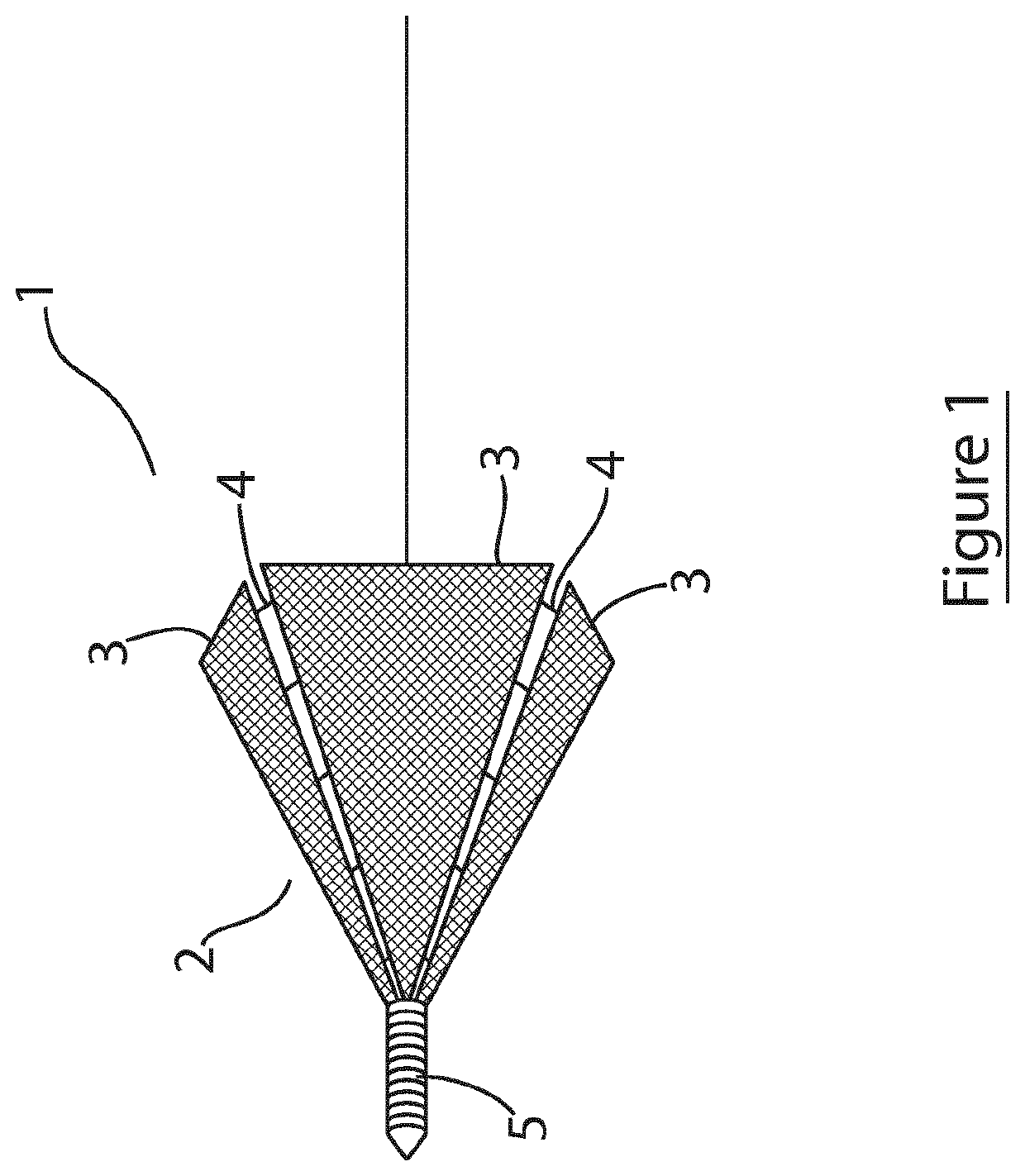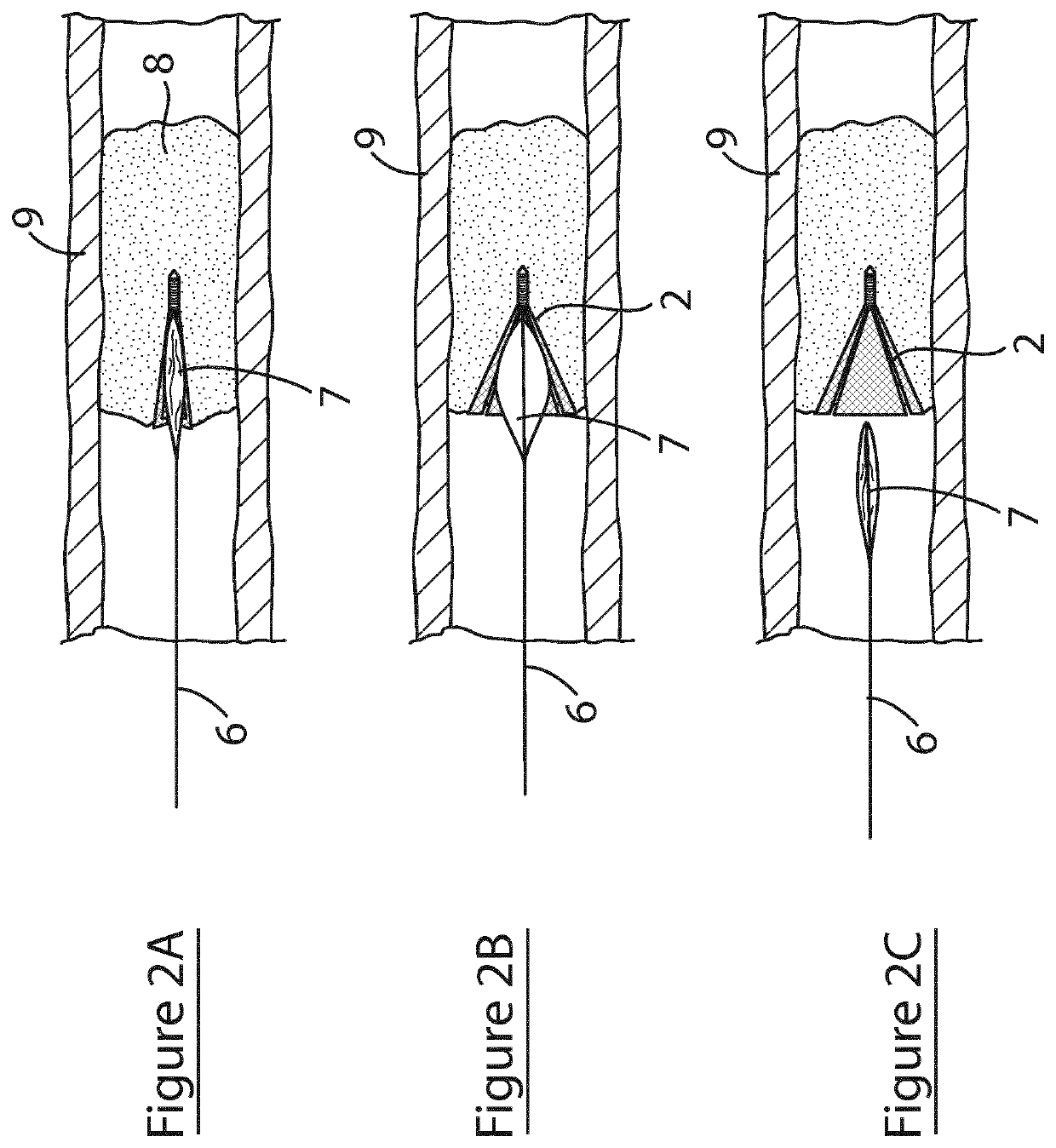Intravascular cell therapy device
a cell therapy and intravascular technology, applied in blood vessels, prostheses, coatings, etc., can solve the problems of at least 20% of all vascular disease patients remaining unsuitable for surgical intervention, and achieve the effects of facilitating retention of these cells, reducing vascular disease, and rapid seeding of proangiogenic cells
- Summary
- Abstract
- Description
- Claims
- Application Information
AI Technical Summary
Benefits of technology
Problems solved by technology
Method used
Image
Examples
example 1
[0091]Referring to FIG. 1, there is illustrated an intravascular cell therapy device (ICTD) of the invention, indicated generally by the reference numerals 1, and comprising a generally conical scaffold body 2 formed by a plurality of sidewall panels 3 of triangular shape and a plurality of adjustable couplings 4 connecting adjacent panels. The scaffold is show in an expanded deployed orientation, with the couplings 4 in an expanded (unfolded) configuration. Although not shown, inward folding of the couplings causes the scaffold to contract and present a smaller profile suitable for percutaneous delivery. The space between adjacent panels when in a deployed orientation will be greater than that illustrated with reference to FIG. 1, with longer couplings, such that when the couplings are folded inwardly, the degree of contraction of the scaffold will be greater. In this embodiment, the couplings are configured to lock when unfolded, thereby locking the scaffold in the deployed config...
example 2
[0094]Referring the FIG. 3, a further embodiment of the ICTD device of the invention, and its use, is illustrated, in which parts identified with reference to the previous embodiments are assigned the same reference numerals. In this embodiment, the device 10 comprises a partially conical scaffold 12 and a delivery catheter 11 coupled to the scaffold by means of a releasable coupling mechanism. Referring to FIGS. 3A to 3D, the scaffold 12 comprises five axially elongated sidewall panels 3 having proximal rectangular sections 13 arranged parallel to an axis of the device (forming the cylindrical distal part of the scaffold) and distal triangular sections 14 that taper inwardly towards a distal end of the device (forming the distal conical part of the scaffold). The distal and proximal sections of each panel are hingedly connected to allow for expansion and contraction of the scaffold. The couplings 4 are foldable struts (as shown in FIG. 3A) that unfold and straighten when the scaffo...
example 3
[0097]Referring to FIG. 5, a further embodiment of the ICTD device of the invention, and its use, is illustrated, in which parts identified with reference to the previous embodiments are assigned the same reference numerals. In this embodiment, the device 20 comprises a partially conical scaffold 12 configured for delivery and deployment using a balloon catheter 6. Referring the FIG. 5A, the device 20 is shown mounted on a balloon 7 of a balloon catheter 6. In FIG. 5B, the balloon 6 is inflated thereby deploying the device 20 within the plaque 8. FIG. 5C shows the balloon deflated and retracted away from the plaque 8 leaving the device 20 embedded in the plaque.
PUM
| Property | Measurement | Unit |
|---|---|---|
| internal diameter | aaaaa | aaaaa |
| internal diameter | aaaaa | aaaaa |
| internal diameter | aaaaa | aaaaa |
Abstract
Description
Claims
Application Information
 Login to View More
Login to View More - R&D
- Intellectual Property
- Life Sciences
- Materials
- Tech Scout
- Unparalleled Data Quality
- Higher Quality Content
- 60% Fewer Hallucinations
Browse by: Latest US Patents, China's latest patents, Technical Efficacy Thesaurus, Application Domain, Technology Topic, Popular Technical Reports.
© 2025 PatSnap. All rights reserved.Legal|Privacy policy|Modern Slavery Act Transparency Statement|Sitemap|About US| Contact US: help@patsnap.com



